A battle between billionaires has spilled over the LA-OC line and will play out in San Diego, where there’s still plenty of politics to come before a new operator is named for the 13,000-seat Pechanga Arena.
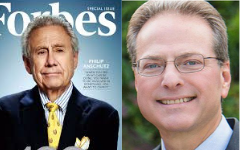
Call it LA Kings owner Philip Anschutz versus Henry Samueli, who counts the rival Anaheim Ducks pro hockey club in his portfolio.
Call it Anschutz Corp. and its AEG Wordwide in Downtown LA versus Samueli’s Corona del Mar-based family office H&S Ventures LLC and its Anaheim Arena Management.
Call it the owner of the Staples Center versus the boss of the Honda Center.
Just don’t call it a done deal.
Samueli did win a first round late last month, and a flurry of follow-up press releases seemed to be crafted to give the impression of a fait accompli, with his outfit landing the contract to operate Pechanga and AEG getting booted off the job.
Neither camp could be reached for comment, but some journalistic enterprise nevertheless found much more to a story that’s still unfolding.
 Some City of San Diego staffers did approve a contract proposal from Anaheim Arena Management – which runs the Honda Center, home of the Ducks – to take over the Pechanga Arena San Diego, formerly known as the San Diego Sports Arena. That’s where the San Diego Gulls play in their role as a minor league affiliate of Samueli’s National Hockey League franchise.
Some City of San Diego staffers did approve a contract proposal from Anaheim Arena Management – which runs the Honda Center, home of the Ducks – to take over the Pechanga Arena San Diego, formerly known as the San Diego Sports Arena. That’s where the San Diego Gulls play in their role as a minor league affiliate of Samueli’s National Hockey League franchise.
And it appears that San Diego Mayor Kevin Faulconer has lined up behind Samueli’s proposal.
But the greenlight that’s been given is just an opener – the deal must be negotiated and get a final approval from the nine-seat San Diego City Council.
Now consider that representatives of Anschutz and AEG – which owns and operates various other venues big and small the world over – continue to make it clear that they don’t plan to walk away without a fight after more than two decades running the arena.
And AEG has some long-established local ties to tout as it looks to derail Samueli’s takeover of the arena’s operations.
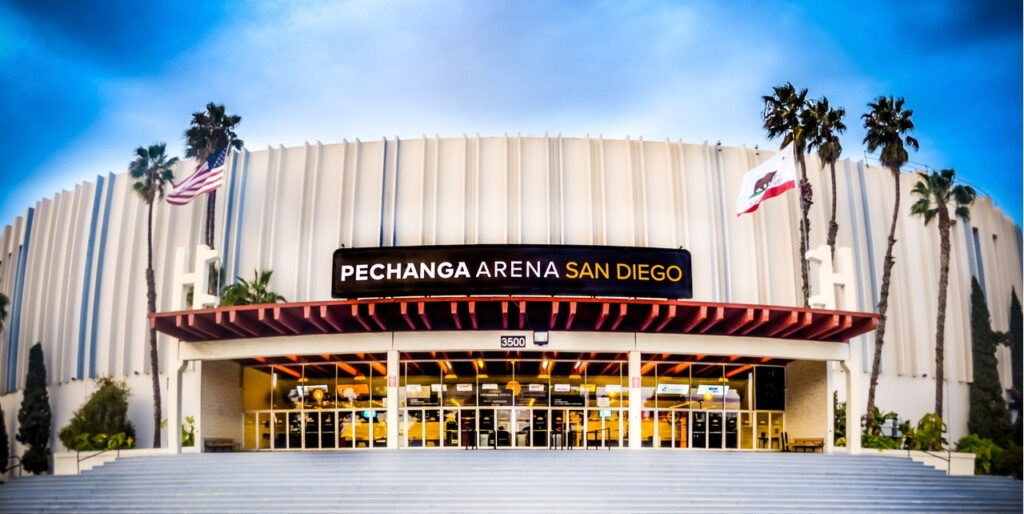
The Pechanga Arena is currently overseen by Ernest Hahn II, an AEG employee and regular among the upper reaches of San Diego’s social and business circles. He is the son of the man who kicked off a renaissance for Downtown San Diego back in the 1980s with the Horton Plaza, a retail hot spot that helped make the Gas Lamp District a showcase of urban revival back then and now is due for redevelopment into an office complex.
AEG also has picked an ally with San Diego roots for its lobbying efforts, retaining locally based Southwest Strategies to make its case in the months-long runup to a vote by the city council, which is expected by next May.
Samueli, meanwhile, is counting on Sacramento-based powerhouse California Strategies to spearhead its lobbying.
Don’t be surprised if some nastiness breaks out in the press – there’s a lot of more at stake than the right to run the 53-year-old arena.
Samueli was already at odds with AEG on behalf of the Gulls – his H&S Ventures successfully sued Anschutz’ outfit earlier this year to get a look at the books on the Pechanga Arena. The building and its land, meanwhile, are located in the Midway District of San Diego, and seen as ripe to join a redevelopment in the works for the larger area.
That makes the matter of who gets to run the arena until then – and bring incumbency status to any plans to build a shiny new venue in the future – a challenge that’s likely to stir full-blown campaigns by OC and LA interests to acquire political influence in San Diego.
Stay tuned.
Los Angeles Garment & Citizen Archives Get New Home at Huntington Library
What does SullivanSaysSoCal.com have in common with a free-thinking Echo Park artist, an international superstar and the Huntington Library, Art Collections, and Botanical Gardens?
The connection centers on a community newspaper of distinction and integrity that I founded called the Los Angeles Garment & Citizen. It was a thoroughly unique publication that had offices in the Fashion District of LA and covered Downtown and surrounding sections of the city from Echo Park to South LA and Pico-Union to the Arts District.
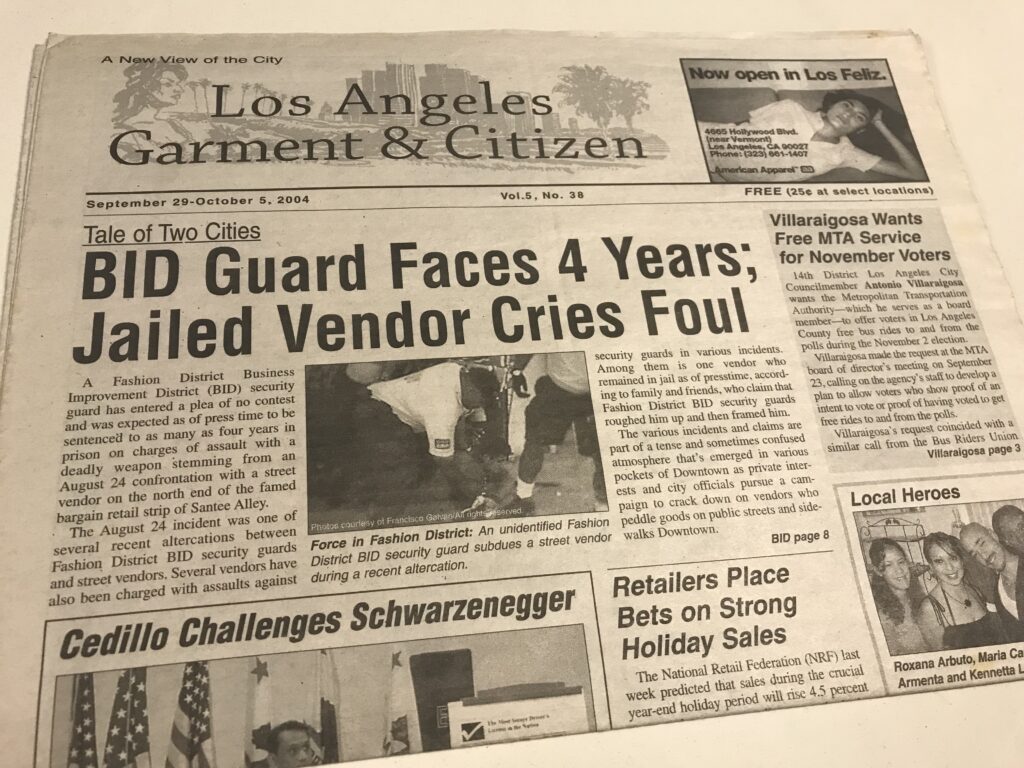
I’m pleased to report that the archives of the Garment & Citizen have found new life. Every one of the hundreds of issues published is now part of the collection of the prestigious Huntington Library in San Marino.
The issues will be added to the materials maintained by the library, which serves as a center of scholarly research and is not generally open to the public. There eventually will be a catalog record of the archives online.
The Garment & Citizen’s archives offer a unique point of view on a crucial chapter of LA’s history, with clear-eyed coverage that gives comprehensive context to the life in all of the communities that made up the city’s center from early 2000 to mid-2010. You can go to this link to see how the Garment & Citizen ended publication: A Tribute to the L.A. Garment & Citizen.
It’s an honor to see the archives go to the Huntington as a gift from cofounder Lorna Corpus Sullivan and me.
Special thanks to Natalie Shore Peterson for her efforts to preserve the Garment & Citizen’s archives in the years since the publication closed; and to Clay Stalls, Ph.D., curator of the California collection at the Huntington; and to hundreds of others who contributed in various ways to the life of the publication.

And now about the artist and the superstar.
The banner that adorned the front page of the Garment & Citizen was a work licensed from Peter Shire, a gifted artist whose studio on Echo Park Avenue has been a center for the creation of everything from giant metal sculptures for Metro subway stations to collections of artsy teapots that have gained global followings
Here’s a secret about the banner artwork – it’s based on an earlier work by Shire’s father, who had a crush on Sophia Loren. Take a good look at the woman at the far left on the banner and you’ll see the influence of the Italian-born beauty on the work of Shire and his father.
That’s a bit of fun to go with the stories, style and standards that made the Garment & Citizen worthy of a permanent place in California’s history at the Huntington Library.
Just imagine the possibilities of SullivanSaysSoCal as it carries that heritage forward in the Digital Age.
Questions on Calle Present Chance for Quality Content
Chapman University in Orange has taken on a worthy challenge, it seems, with the establishment of its Center for Freedom of Expression and Media Integrity.
The school also stirred up some controversy with its recent selection of LA Weekly and Irvine Weekly Publisher and Chief Executive Brian Calle as executive director of the new campus-based center.
Much of the initial reaction stemmed from Calle’s move to cut staff when he first arrived as the managing representative of new ownership of LA Weekly in 2017.
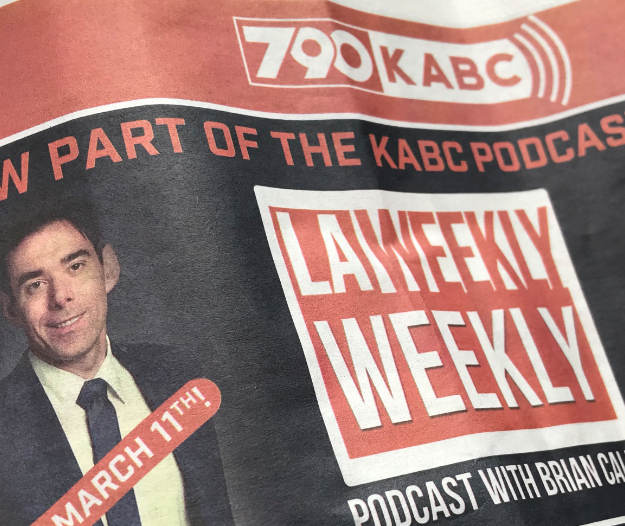
It’s notable that such business moves were made in a context that certainly included journalistic considerations but also went beyond that side of the operation. It’s no secret that legacy media that still rely on print products to generate a significant share of revenue have been – and are likely to remain – under pressure for some time. Any decision to cut staff at LA Weekly in 2017 could have been entirely within a reasonable effort in pursuit of the publication’s survival and sustainability.
That context all got lost in a muddle of poor communications from various quarters back then.
These days there is plenty to evaluate when it comes to the actual journalism LA Weekly and the newly launched Irvine Weekly have produced under Calle’s leadership.
And there’s room to question some of the ties he maintains to other enterprises and the influence they might wield over coverage that’s presented to readers as independent journalism.
The knee-jerk against his appointment to the Chapman Center didn’t get that far, though.
Neither Calle nor Chapman, meanwhile, offered enough information to provide some of the clarity that was missing in initial reports on the circumstances of his tenure as executive director of the center. Calle didn’t respond to inquiries about whether he will retain his ties to the two local publications while running an academic center that sets out to “advance and promote the ideals of free speech and balanced media while at the same time monitor and challenge media bias and assaults on free speech.”
A spokesperson for Chapman said the school does not “discuss personnel issues and employment arrangements.”
Columnist’s View
This all seems a shame and a missed opportunity so far.
Here’s urging Chapman and Calle to square up on any of the several legitimate questions his appointment has prompted.
And here’s hoping any critics of the person, the hire or the institution will set emotions to the side and give appropriate voice to any well-reasoned apprehensions.
That could produce the sort of discussion a Center for Freedom of Expression and Media Integrity would do well to foster.
LAHSA Told Us All We Needed to Know
This column has stacked up all sort of questions about public officials in LA and their actions – and lack of actions – when it comes to addressing homelessness.
Coverage will continue in coming editions – and here’s a clear illustration of a key aspect of why the questions will continue whether or not public officials have the will or ability to answer.
SullivanSaysSoCal’s edition of July 16 hit upon a basic problem at LAHSA two months before City Controller Ron Galperin issued a scathing report on the agency and the legacy media scrambled to react:
LAHSA’s Lapse
Here’s a question about the website of the Los Angeles Homeless Services Authority, a joint venture of the city and county.
Why is it that LAHSA has spent hundreds of millions of taxpayer dollars over the past two years but hasn’t managed as of this writing to update its “Citizen’s Guide to County and City Services” since August 23, 2017?
Last week brought this report from the LA Times, relaying to readers what Galperin told the media about LAHSA:
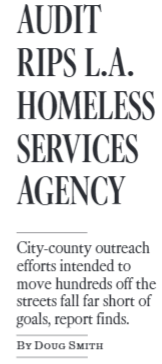
What’s the point of presenting the counterpoint that this column’s coverage offers to the reports from LA’s legacy media?
The point is that public officials and the agencies they run tell us all we need to know with their actions – or lack of actions.
Kudos to Galperin for doing what he’s supposed to do as the city’s chief auditor.
But keep in mind that members of the press corps who do little more than wait for public officials to give them status updates become part of the very apparatus they are supposed to cover.
The actions of various elected and other public officials at LA City Hall regularly tell us about the culture of corruption there, as well as instances of incompetence such as LAHSA’s failure to update its website for two years.
SullivanSaysSoCal will continue to observe and bring such matters to the attention of our readers, and we’ll continue to urge colleagues in the legacy media to stop merely recording the actions of politicians and start reporting on government.
This Question Cuts Across SoCal: Can Locals Resist Leviathan?
By Joe Mathews
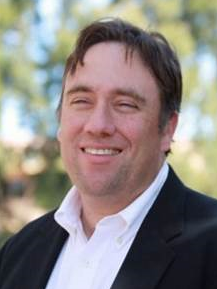
As California builds its capacity to fight the Leviathan that is the Trump administration, does it risk turning our state government into a Leviathan of our own?
This unhappy question occurred to me while reading “Liberty and Coercion: The Paradox of American Government” by Gary Gerstle.
At the heart of the American experiment, argues Gerstle, an American historian based at the University of Cambridge, is a nasty contradiction. The American constitution is liberal: it’s designed to limit government in the name of protecting liberty. But our states are authoritarian bullies, with vast powers to coerce us. For most of American history, the states got away with abusing their people, Gerstle notes, because they were exempted from the Bill of Rights.
We typically associate the power of states with the South, and the horrors of slavery and Jim Crow. But throughout its history, California has aggressively abused its state power—in our genocide of Native Americans, our discrimination against people of Asian heritage, and our protection for the crooked railroad barons of Sacramento.
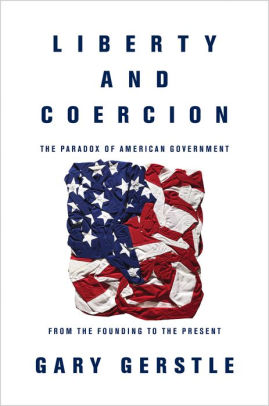 It wasn’t until the middle of the 20th century that state power was curbed by the federal government, which grew in response to the Depression, World War II, and the civil rights movement.
It wasn’t until the middle of the 20th century that state power was curbed by the federal government, which grew in response to the Depression, World War II, and the civil rights movement.
Ironically, this expansion of federal power—and rollback of state power—was championed by former California Gov. Earl Warren, as chief justice of the U.S. Supreme Court. Under Warren, the more expansive federal government launched social programs and stopped states from violating civil rights. But the new federal Leviathan also imposed unprecedented regulations on people’s lives (including immigration restrictions) and created an imperial presidency and national security state devoted to constant warfare, in Gerstle’s view.
These contradictions, Gerstle argues, contribute to today’s paralyzing polarization. The federal government is so powerful that both political parties feel compelled to fight for every inch of it. For all their disagreements, Trump and his Democratic challengers both like the federal juggernaut. Their battles are over who controls it.
Yes, California’s fight against the federal government is righteous—and necessary. How could our state not fight a federal monster led by such a deranged person? But in so doing, we are turning our already powerful state into a one-party-controlled Leviathan of its own. Since power corrupts, it’s inevitable that our state leaders will turn this creation against us.
Even before Trump, our state government had accumulated too much power, as a result of a century’s efforts by the left and right. Early in 20th century, Progressives took power from local communities to create state regulatory agencies. Later in the 20th century, conservatives, pursuing tax limits and longer criminal sentences, transferred more local power to Sacramento. In this century, ascendant progressives have awarded more power to the state in the name of tackling poverty and climate change.
Gerstle is wary of powerful states, and argues for remaking the U.S. Constitution to put the federal government on firmer footing. But reading him, I had visions of an epic battle between the twin Leviathans of federal and state power swamping our communities and values.
Instead, Californians should consider a different form of resistance: a movement to restore local democracy.
Unfortunately, California’s local governments are too weak to address our most serious problems. So we must return power to these local sites. A decentralized system also would provide greater protection from the excesses of power in Washington, Sacramento, and elsewhere.
One obvious lesson of the Trump era is the madness of investing massive government authority in one person. Just as soon as the state Leviathan has beaten the president, Californians will need to come together to protect ourselves from Sacramento.
Joe Mathews writes the Connecting California column for Zócalo Public Square.
Sullivan Says
Personal to Gregory Rodriguez: What do you get when you cross a pirate with a naval officer?






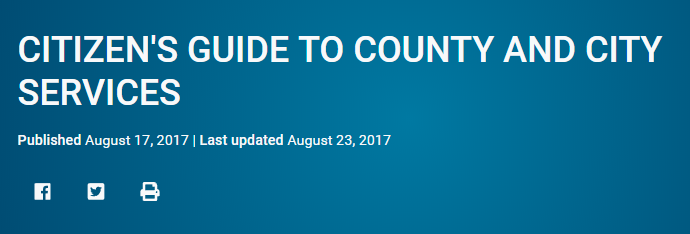
Pingback: OC Exec Tops Hollywood for Biden | Anschutz Tops Samueli with Backup from Brookfield | Bobby Mac Throwback | Schulz Departs Orange Coast | Beware Beutner’s Used Car